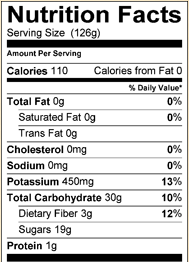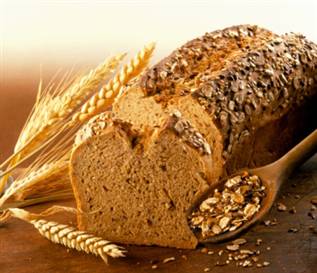

For those unfamiliar with the Paleo Diet, the premise is simple; you simply eat whatever your hunter-gatherers ancestors ate before the advent of agriculture. This means removing all grains, legumes and dairy from your diet. Leaving you with lots of vegetables, fruits, meats, fish, fowl, nuts and healthy oils. The rationale behind this diet is that it takes a long period of time (something like 10,000 years) for a species to adopt a new diet, and we haven’t passed that threshold yet. Paleo advocates also claim that some components of grains are actually toxic and detrimental to overall health.
I’ve gone Paleo for the past 8 days in an attempt to optimize my health and nutrition. For the first few days it seemed to be a welcome change; I’ve lost the need to have to munch on something every couple of hours and maybe even felt a bit more energized. But recently I started getting strong carb cravings and feelings of malnourishment. I should note that in tandem with this diet, I am also working out pretty rigorously following my usual routine. So that might be causing my body to crave more carbs.
In keeping up with the Paleo guidelines, I end up binging on fruits and tubers. All this consumption of Paleo-aproved carbs got me thinking if the diet is sound. By comparing the nutritional facts we learn that a single banana has more carbs than a bowl of oatmeal! Is this Paleo thing really ligit?! I am being unfair — Paleo enthusiasts do suggest limiting your fruit intake. But what would be the harm in replacing my morning banana with a bowl of delicious oatmeal?
Reading through Mark Sisson’s The Primal Blueprint reveals some holes in his biological rationale for going “primal” (Mark’s cooler version of Paleo). He mentions that a high carb diet leads to an over-production of insulin. Which, in turn, causes cells to become unreceptive to glucose — causing malnutrition and the buildup of body fat. But fruits have carbs too!
Dylan Klein does an amazing job at explaining the flaws of The Paleo Manifesto.
Coincidentally positive results from going Paleo might just be some sort of placebo effect taking place. If I recall the statistics correctly, more people heal from placebo drugs compared to actual ones. So there you have it!
Tag: carbs
The Skinny on Whole Wheat and Fiber

What are whole grains, and what makes them so special? It’s pretty simple: during the milling process, the bran and germ of the grains are kept intact, but removed in refined grains.
What are the benefits of removing the bran and germ? Great shelf life for the manufacturer and softer texture in baking. Unfortunately you lose a lot when you lose the bran and germ, because they contain higher amounts of vitamins, minerals, fiber, essential fatty acids, antioxidants, and phytochemicals.
Fiber found in whole grains help you feel fuller for longer periods of time, which in turn helps you maintain a healthy diet and stops you from over-eating. Refined or enriched grains digest much quicker leading to fat gain, energy crashes and overeating (due to less satiety). On the other hand, whole wheat digests much slower. Slow digestion yields slow release of energy, providing longer-lasting energy and increased satiety.
Studies show that when athletes eat whole-grain carbs before exercise, they have greater endurance, burn more fat during exercise and at rest, and they eat fewer calories during the day.
Another added benefit of whole grains, is that they aid in reducing the risk of different diseases and cancers. Whole grains have also been showed to decrease the amount of bad cholesterol (LDL) and increase the amount of good cholesterol (HDL). Fiber which is found in high volumes in whole grains, helps regulate your gastrointestinal system. If that wasn’t enough, fiber also help maintain healthy levels of blood sugar in your system which prevent the onset of type two diabetes.
Now that we know the benefits of whole wheat, that doesn’t mean that we can eat whole wheat bread and pasta all day long! Whole wheat should be mixed with plenty of vegetables and protein in your diet. The recommended amount is around 3 ounces. A one-ounce serving can be in the form of a slice of bread; a half cup of cooked cereal, rice, or pasta; or about 1 cup of dry cereal.
When purchasing whole wheat make sure to read the ingredients and not simply fall for the advertising. The ingredients must specify: “whole grain” or “100% whole wheat”.
I’d like to bring more quality content to you, please share this blog with your friends.
The Ultimate Oatmeal Recipe

Everyone knows that oatmeal is good for you. It is made up of slow digesting carbs, fiber, and 5g of protein per serving!
But eating plain oatmeal everyday can get boring and I must admit it doesnt taste that great.
I stumbled upon this recipe online and modified it to my liking:
- Place 1 cup of milk (for extra protein–8g) into a pot on maximum heat.
- Add a dash of cinamin, half a teaspoon of brown sugar and a drop of vanilla extract to the milk.
- As soon as the milk starts to bubble lower the heat to medium.
- Add 7 tablespoons of oatmeal.
- Add a handful of raisins and some nuts (I prefer walnuts, but almonds work too.)
- Stir the oatmeal for 3-5 minutes and enjoy!
Protein count: 1 cup milk-8g, 1 ounce walnuts-4g, 1/2 cup oatmeal-5g=17g of protein!! If this breakfast follows a workout add 2 hard boiled or scrambled eggs as a side for another 12g, leaving you with 29g of protein! Not too shabby. Skip the whey protein and stick to natural.
For a pleasant crunchy nutty flavor, try out steal cut oats. The ingredients stay the same but the cooking time goes up to 30 minutes–you can only add milk in the end to avoid burning.